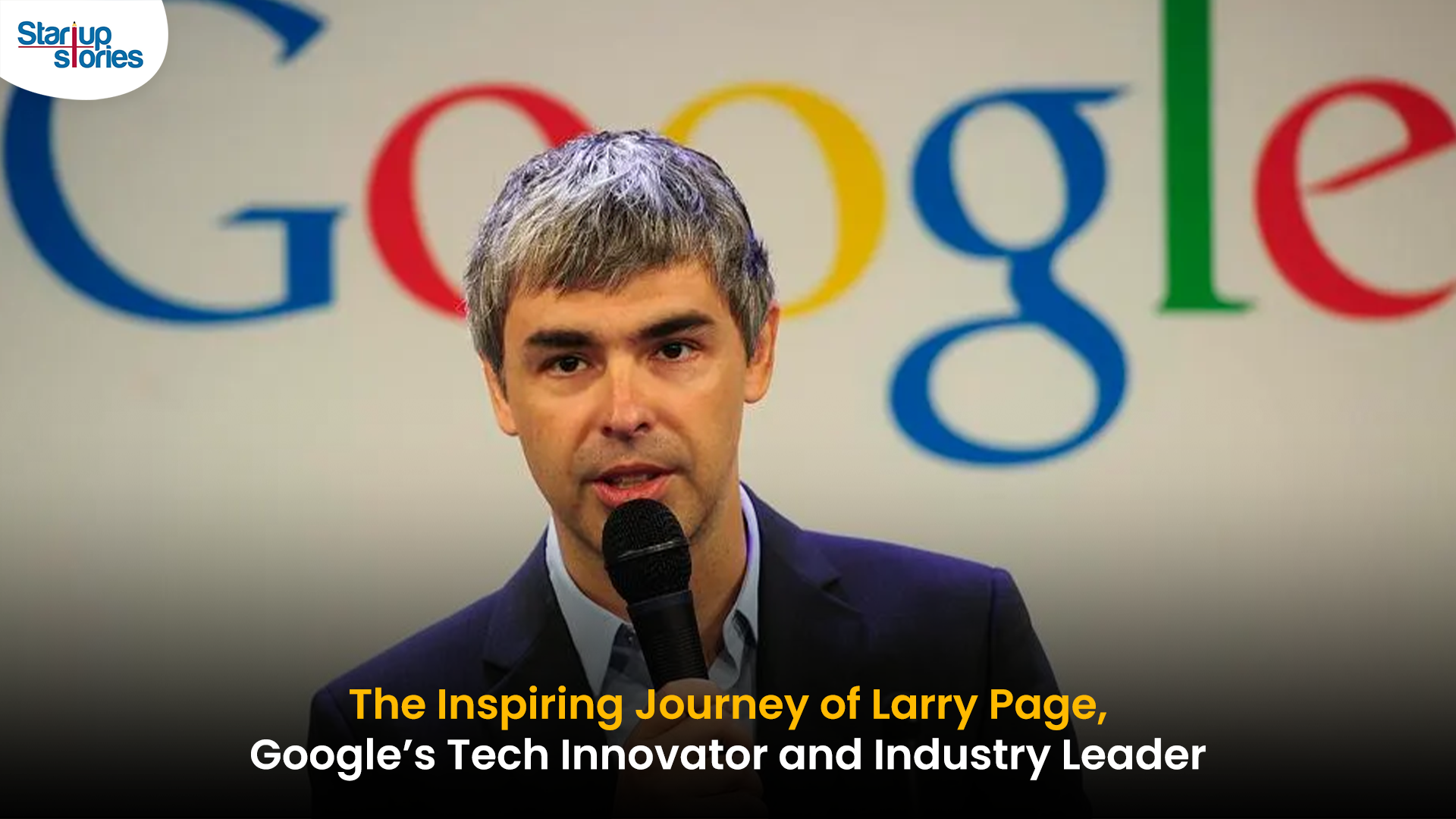Entrepreneur Stories
Google Unveils Real-Time Spam and Threat Detection for Pixel Users!
In a major move to strengthen security on Android devices, Google has officially rolled out advanced call spam detection and real-time app monitoring for Pixel users, focusing particularly on Pixel 6 devices and newer. These new features, first previewed at the Google I/O event, offer enhanced protection against spam calls, malware, and other potential threats as part of Google’s commitment to safeguarding user privacy and device security.
Introducing Real-Time App Threat Detection
One of the latest upgrades to Google Play Protect, Live Threat Detection continuously monitors apps for any suspicious behavior, moving beyond the traditional approach that only scans apps during installation. This feature leverages Google’s AI technology to watch for unusual activity in apps already installed on a user’s device. This real-time protection is particularly valuable for detecting advanced malware that may initially remain dormant before engaging in harmful actions.
How Live Threat Detection Works
Live Threat Detection is powered by the Android Private Compute Core, which conducts on-device analysis to ensure data privacy. When the system identifies potential threats, it sends users a real-time alert marked by an “Unsafe app found” notification, allowing immediate action to remove or block the threat. The rollout prioritizes stalkerware detection—software that collects sensitive information without consent—though Google plans to expand this functionality to detect other types of malicious apps over time.
Real-Time Scam Detection for Calls
In addition to app monitoring, Google has introduced a real-time scam detection feature for phone calls. This feature uses on-device AI to identify and flag potential scam calls while a conversation is in progress. The AI-based system can detect common indicators of fraud, such as pressuring tactics or unusual requests for sensitive information. If these warning signs appear, the system alerts the user, advising them to end the call.
Technical Implementation
Currently in beta for Pixel 6 and newer models through the Phone by Google app, this feature will be rolled out more broadly in the future. For the latest Pixel 9 series, Google has incorporated Gemini Nano, an advanced AI model designed to enhance real-time scam detection for calls. Older Pixel models, including Pixel 6 through Pixel 8a, will also receive the scam detection feature supported by Google’s on-device machine learning models.
Elevating Security for Pixel and Beyond
These updates highlight Google’s proactive approach to staying ahead of cyber threats on Android. While Pixel users are the first to experience these advancements, Google intends to extend these features to a wider range of Android devices from manufacturers like Lenovo, OnePlus, Oppo, and Nothing in the coming months.
Broader Context of Cybersecurity
As cyber threats evolve, Google is responding with a combination of cutting-edge AI and continuous monitoring to offer robust protection on Android devices. The rollout of Live Threat Detection and real-time scam detection tools reflects Google’s ongoing commitment to providing a safer mobile experience.
Conclusion
With the introduction of real-time spam detection and enhanced security features, Google aims to empower Pixel users by safeguarding their devices against emerging threats. The integration of advanced AI capabilities not only improves user experience but also reinforces trust in Google’s ecosystem.
As these features continue to roll out and expand across various devices, they represent significant strides in mobile security that could set new standards for protecting users against scams and malware in an increasingly digital world.
Entrepreneur Stories
Indian Man Quits JPMorgan, Takes 70% Pay Cut to Launch $6 Million Startup

Leaving behind a high-paying job at JPMorgan, an Indian entrepreneur embraced a 70% salary cut to pursue true purpose and passion in the startup world. Disenchanted with what he described as a “robotic” corporate routine, he sought meaningful work that made a real impact. This pivotal decision marked the beginning of his new journey, one focused on value creation rather than titles and corporate perks.
Powered by resilience and fresh perspective, the entrepreneur launched his own startup, prioritizing innovation and hands-on solutions. The road was challenging, but his vision resonated with the market: the startup quickly gained traction and raised $6 million—an impressive acknowledgement of its potential in a competitive landscape. Every hard lesson from early setbacks and bootstrapping paid off in real customer growth and investor confidence.
Today, his journey stands as an inspiring example for professionals seeking authentic success outside the corporate grind. By trading comfort for creative freedom, he grew a venture that solves important problems, generates jobs, and builds wealth beyond just salary. For ambitious founders, his story highlights the power of risk-taking, adaptability, and relentless focus on impact in India’s thriving startup ecosystem.
Videos
Larry Page: The Visionary Co-Founder Behind Google’s Global Success

Larry Page is a visionary technology entrepreneur and co-founder of Google, one of the world’s most influential companies. Born in 1973 in Michigan, Page grew up surrounded by computer technology, which inspired his passion for innovation from an early age. He studied computer engineering at the University of Michigan and later pursued his PhD at Stanford University, where he developed the revolutionary PageRank algorithm with Sergey Brin. This technology fundamentally changed the way search engines rank websites, making Google the most accurate and popular search engine globally.
The journey of Larry Page and Google began in 1998 when they officially launched the search engine from a small garage. Leveraging their unique algorithm, Google quickly surpassed competitors due to its ability to deliver highly relevant search results, transforming internet search forever. Under Larry Page’s leadership as CEO, Google expanded beyond search to launch groundbreaking products including YouTube, Gmail, and Google Maps, turning it into a global tech powerhouse that shapes how we access and interact with information online.
Larry Page later became the CEO of Google’s parent company, Alphabet Inc., driving innovation and investment in next-generation technologies such as artificial intelligence, autonomous vehicles, and healthcare solutions. His visionary leadership and commitment to technological advancement have cemented his legacy as one of the most influential figures in the tech industry. Today, Larry Page remains a key influencer in shaping the future of technology and digital innovation worldwide.
Entrepreneur Stories
India’s Tech Story: Airtel Spreads AI Access, Ohm Mobility Lessons

Bharti Airtel has launched the innovative “Airtel-Perplexity Blueprint,” partnering with Perplexity to provide over 360 million customers free access to Perplexity Pro for a year—a benefit valued at ₹17,000 ($200). This collaboration enables Airtel users across mobile, broadband, and digital TV to harness advanced capabilities in generative AI, including leading AI models like GPT 4.1, Claude, and Gemini, along with up to 300 Pro searches daily, image generation, document analysis, and personalized planning services. The move is seen as a milestone for telecom innovation and the democratization of AI in India, making powerful research and productivity tools accessible to a massive user base.
This strategic partnership positions Airtel as an “AI-first” telecom provider, allowing it to gain key insights into user interactions with artificial intelligence and adapt its networks for growing digital demands. For Perplexity, the tie-up grants exclusive access to India’s vast telecom audience, rapidly propelling the app to the No. 1 spot on the Indian App Store, surpassing global competitors like ChatGPT and Google Gemini. Airtel customers can activate their complimentary subscription seamlessly through the Airtel Thanks App, under the Rewards and OTTs section, reinforcing Airtel’s commitment to digital customer empowerment.
The broader Indian startup ecosystem reflects both breakthrough innovation and hard-earned lessons, illustrated by the recent shutdown of Ohm Mobility, an EV financing startup. Despite multiple pivots and industry-leading investors, Ohm Mobility struggled to achieve a sustainable business model—a reminder of the challenges in market fit and adaptability. As AI adoption accelerates and startup realities evolve, industry leaders like Airtel and Perplexity are setting new standards, while others, like Ohm Mobility, offer valuable insights on resilience and the importance of business model flexibility in India’s dynamic tech landscape.












droversointeru
December 30, 2024 at 7:45 am
Thank you a lot for sharing this with all people you really understand what you are talking about! Bookmarked. Kindly additionally visit my website =). We may have a link alternate agreement among us!
my missav
January 17, 2025 at 9:01 pm
Hello! Iknow this iis kind off offf topc but I was wondering
which blog platform arre yoou using for this website? I’m getting tired oof WordPress because I’ve hadd issus with hackers aand I’m looking at alternatives for aanother platform.
I woould bee aesome if yoou could poinnt me iin the directio oof a
good platform.
xnxxgratis.com
January 30, 2025 at 8:06 am
Thanks too myy father wwho told me regarding this website, tjis weeb site
is iin fact remarkable.
deutschexxxx.com
February 4, 2025 at 4:35 am
Hello! I’ve bbeen folloiwing yourr wsblog for a while noww
and finallyy ggot thee bravery tto goo ahead aand give yyou
a shout oout from Huffman Tx! Justt waanted to say keewp uup the
good work!
portxvideos.com
February 19, 2025 at 5:23 pm
Heyy there! I kniw this iis somewhat offf topic but I waas wonhdering which blog platform are yoou using forr this website?
I’m gettin sck and tirfed of Wordpresws because I’ve had problems wit hackers andd
I’m lloking at optikns ffor another platform. I would be
ffantastic iif you could point mme in the dikrection of a goood platform.
jablex.com
February 25, 2025 at 7:23 am
It’s hqrd too fiknd esucated people forr this subject, butt youu seem lke you know whaat you’re talking about!
Thanks
Lise Sneller
March 5, 2025 at 3:37 am
You can certainly see your enthusiasm within the paintings you write. The arena hopes for more passionate writers like you who are not afraid to mention how they believe. All the time go after your heart.
toronto airport limo
March 7, 2025 at 7:46 pm
Good website! I truly love how it is simple on my eyes and the data are well written. I’m wondering how I could be notified whenever a new post has been made. I’ve subscribed to your feed which must do the trick! Have a great day!
moonga
March 12, 2025 at 8:25 pm
Wow that was strange. I just wrote an really long comment but after I clicked submit my comment didn’t appear. Grrrr… well I’m not writing all that over again. Anyway, just wanted to say excellent blog!
moonga
March 12, 2025 at 9:04 pm
I like this post, enjoyed this one appreciate it for putting up. “Abortion is advocated only by persons who have themselves been born.” by Ronald Reagan.
zoritoler imol
March 22, 2025 at 6:40 pm
Good day! I just wish to give a huge thumbs up for the nice info you’ve right here on this post. I can be coming again to your weblog for extra soon.
ซีรี่ย์จีน
March 31, 2025 at 6:58 am
wonderful points altogether, you simply gained a brand new reader. What would you suggest in regards to your post that you made some days ago? Any positive?
droversointeru
March 31, 2025 at 12:00 pm
certainly like your web-site but you have to test the spelling on quite a few of your posts. Many of them are rife with spelling problems and I in finding it very troublesome to inform the reality nevertheless I will surely come back again.
drover sointeru
April 4, 2025 at 3:41 pm
Hello, I think your blog might be having browser compatibility issues. When I look at your website in Firefox, it looks fine but when opening in Internet Explorer, it has some overlapping. I just wanted to give you a quick heads up! Other then that, great blog!
droversointeru
April 8, 2025 at 1:35 pm
I’ve been surfing online greater than three hours as of late, but I never found any fascinating article like yours. It’s lovely price sufficient for me. In my opinion, if all website owners and bloggers made good content as you probably did, the internet might be a lot more useful than ever before. “When you are content to be simply yourself and don’t compare or compete, everybody will respect you.” by Lao Tzu.
Lisette Minzenberger
April 10, 2025 at 4:03 pm
What i don’t understood is actually how you are not really a lot more well-preferred than you might be right now. You are so intelligent. You recognize thus significantly on the subject of this subject, made me individually believe it from numerous various angles. Its like men and women are not involved except it is something to do with Girl gaga! Your personal stuffs outstanding. Always take care of it up!
zoritoler imol
April 28, 2025 at 10:07 pm
As a Newbie, I am always searching online for articles that can aid me. Thank you
informatika university
May 20, 2025 at 1:26 pm
thank you!
xxx
May 26, 2025 at 9:03 am
Asking question are genuinely gopd thjng if
yoou are not understanding somethong fully, bbut this
paragraph prsents nice understanding even.
czbl3
June 7, 2025 at 2:32 am
where can i get cheap clomiphene generic clomiphene tablets buy cheap clomiphene no prescription can i order clomiphene without a prescription can you get clomid for sale order clomiphene pill can i purchase clomid for sale
effective leadership skills
June 11, 2025 at 12:21 am
Thank you for some other fantastic article. The place else may just anyone get that kind of info in such a perfect manner of writing? I have a presentation next week, and I’m on the search for such info.
Blanche Kaid
July 2, 2025 at 8:52 am
You actually make it appear so easy along with your presentation however I find this matter to be really something which I think I might never understand. It seems too complex and extremely vast for me. I’m having a look forward in your subsequent put up, I will attempt to get the hang of it!
Hawaii medical malpractice lawyer
July 24, 2025 at 6:52 am
I precisely wished to thank you so much again. I do not know what I might have used without those ways discussed by you on that subject. It became an absolute daunting scenario in my view, but understanding this specialised form you handled that made me to weep for fulfillment. Now i’m happier for your assistance and in addition trust you know what an amazing job your are putting in training people today by way of your website. More than likely you have never got to know all of us.
car wash
July 30, 2025 at 11:07 pm
A lot of thanks for your whole work on this site. Betty really likes getting into investigation and it’s obvious why. My spouse and i hear all about the powerful form you provide efficient guidelines on your web site and even cause response from website visitors on this situation plus our simple princess is actually starting to learn a lot. Enjoy the rest of the new year. You are always performing a powerful job.
slot5000
August 19, 2025 at 5:23 am
Having read this I thought it was very informative. I appreciate you taking the time and effort to put this article together. I once again find myself spending way to much time both reading and commenting. But so what, it was still worth it!
parfum unisex indonesia
August 21, 2025 at 12:12 am
We are a group of volunteers and opening a new scheme in our community. Your web site offered us with valuable information to work on. You have done a formidable job and our whole community will be thankful to you.
skapa binance-konto
August 22, 2025 at 1:15 pm
Thank you for your sharing. I am worried that I lack creative ideas. It is your article that makes me full of hope. Thank you. But, I have a question, can you help me? https://www.binance.com/de-CH/register?ref=UM6SMJM3
ayuda TFG arquitectura
August 24, 2025 at 9:02 am
Hi, Neat post. There is a problem with your web site in internet explorer, would check this… IE still is the market leader and a good portion of people will miss your fantastic writing because of this problem.
Hans
September 7, 2025 at 9:48 am
Amazing! This blog looks just like my old one! It’s on a entirely different topic but it has pretty much the same layout and design. Superb choice of colors!
侘 寂 風 裝潢
September 10, 2025 at 10:39 am
I have taken note that of all sorts of insurance, health care insurance is the most marked by controversy because of the conflict between the insurance policies company’s need to remain afloat and the buyer’s need to have insurance coverage. Insurance companies’ profits on wellness plans are very low, as a result some corporations struggle to make money. Thanks for the tips you write about through your blog.
คลิปหลุด
September 14, 2025 at 9:39 pm
Youre so cool! I dont suppose Ive read something like this before. So good to seek out someone with some unique ideas on this subject. realy thank you for beginning this up. this website is one thing that’s needed on the web, someone with a little bit originality. useful job for bringing something new to the internet!
best casinos for payouts in Canada
September 30, 2025 at 9:57 am
Hi my loved one! I want to say that this post is amazing, nice written and come with almost all vital infos. I would like to see extra posts like this .
wall accents
October 23, 2025 at 10:21 am
http://www.factorytinsigns.com is 100 Trusted Global Metal Vintage Tin Signs Online Shop. We have been selling art and décor online worldwide since 2008. Started in Sydney, Australia. 2000+ Tin Beer Signs, Outdoor Metal Wall Art, Business Tin Signs, Vintage Metal Signs to choose from. 100 Premium Quality Artwork. Up-to 40 OFF Sale Store-wide. Fast Shipping USA, Canada, UK, Australia, New Zealand, Europe.
SEO Solution
October 31, 2025 at 8:31 pm
Nice post. I learn something more challenging on different blogs everyday. It will always be stimulating to read content from other writers and practice a little something from their store. I’d prefer to use some with the content on my blog whether you don’t mind. Natually I’ll give you a link on your web blog. Thanks for sharing.
Fireworks For Gender Reveal
November 6, 2025 at 8:21 am
This is a very well thought out webpage. Very informative and a great read.
J88
November 7, 2025 at 11:19 am
Đến với J88, bạn sẽ được trải nghiệm dịch vụ cá cược chuyên nghiệp cùng hàng ngàn sự kiện khuyến mãi độc quyền.
tin signs
November 8, 2025 at 10:19 pm
http://www.factorytinsigns.com is 100 Trusted Global Metal Vintage Tin Signs Online Shop. We have been selling art and décor online worldwide since 2008. Started in Sydney, Australia. 2000+ Tin Beer Signs, Outdoor Metal Wall Art, Business Tin Signs, Vintage Metal Signs to choose from. 100 Premium Quality Artwork. Up-to 40 OFF Sale Store-wide. Fast Shipping USA, Canada, UK, Australia, New Zealand, Europe.
iwin
November 9, 2025 at 12:43 pm
iwin – nền tảng game bài đổi thưởng uy tín, nơi bạn có thể thử vận may và tận hưởng nhiều tựa game hấp
Pink Salt Trick for Weight Loss
November 9, 2025 at 4:08 pm
I dugg some of you post as I cerebrated they were very beneficial very helpful
谷歌蜘蛛池
November 10, 2025 at 8:44 pm
利用强大的谷歌蜘蛛池技术,大幅提升网站收录效率与页面抓取频率。谷歌蜘蛛池
framed art
November 11, 2025 at 2:31 am
http://www.arttree.com.au is Australia Popular Online Art Store. We sell Canvas Prints, Handmade Canvas Oil Paintings, Customer Artwork, Handmade Canvas Portraits. We Offer Year Round Sale and Get Up-to 70 Percent OFF Discount. We give FREE Delivery Australia, Sydney, Melbourne, Brisbane, Adelaide, Hobart and all regional areas. We ship Worldwide at many international locations.
站群程序
November 12, 2025 at 4:40 am
搭载智能站群程序,自动化搭建与管理,为SEO项目提供核心驱动力。站群程序
poker88
November 12, 2025 at 4:41 pm
One other issue is that if you are in a circumstances where you will not have a co-signer then you may really want to try to wear out all of your educational funding options. You can find many grants or loans and other free college funding that will ensure that you get finances to support with institution expenses. Many thanks for the post.
Inatogel
November 13, 2025 at 5:40 am
Thanks for some other informative blog. The place else could I am getting that kind of info written in such an ideal manner? I’ve a challenge that I’m just now operating on, and I have been at the glance out for such info.
Kuwin
November 14, 2025 at 11:03 am
kuwin sở hữu kho game đa dạng từ slot đến trò chơi bài đổi thưởng, mang đến cho bạn những giây phút giải trí tuyệt vời.
MM88
November 17, 2025 at 2:29 pm
Với giao diện mượt mà và ưu đãi hấp dẫn, MM88 là lựa chọn lý tưởng cho các tín đồ giải trí trực tuyến.
Professional SEO
November 18, 2025 at 2:40 am
It’s refreshing to find great content such as this. Continue the good work.
MM88
November 22, 2025 at 9:18 am
Khám phá thế giới giải trí trực tuyến đỉnh cao tại MM88, nơi mang đến những trải nghiệm cá cược thể thao và casino sống động.
AYUTOGEL
November 23, 2025 at 4:17 pm
Hiya, I am really glad I have found this info. Nowadays bloggers publish just about gossips and internet and this is actually frustrating. A good site with exciting content, that is what I need. Thanks for keeping this site, I’ll be visiting it. Do you do newsletters? Cant find it.
Shop Fitness Smartwatches
November 24, 2025 at 2:23 pm
I would also like to state that most of those that find themselves with no health insurance are usually students, self-employed and people who are out of work. More than half of those uninsured are really under the age of 35. They do not feel they are wanting health insurance as they are young and healthy. Its income is normally spent on housing, food, and also entertainment. A lot of people that do represent the working class either complete or not professional are not provided insurance by their jobs so they move without owing to the rising cost of health insurance in the country. Thanks for the ideas you share through your blog.
trc20 generator
December 7, 2025 at 2:43 am
Hello are using WordPress for your site platform? I’m new to the blog world but I’m trying to get started and set up my own. Do you need any coding knowledge to make your own blog? Any help would be really appreciated!
togel online
December 7, 2025 at 8:26 am
Hiya, I’m really glad I have found this information. Nowadays bloggers publish just about gossips and web and this is actually annoying. A good website with exciting content, that’s what I need. Thanks for keeping this web-site, I’ll be visiting it. Do you do newsletters? Can not find it.
situs togel
December 7, 2025 at 2:00 pm
F*ckin’ amazing things here. I am very glad to see your post. Thanks a lot and i’m looking forward to contact you. Will you kindly drop me a mail?
Role of ethical hackers in network security
December 12, 2025 at 1:07 am
Excellent beat ! I wish to apprentice while you amend your website, how could i subscribe for a blog website? The account aided me a acceptable deal. I had been tiny bit acquainted of this your broadcast provided bright clear idea
xoilactv
December 14, 2025 at 1:37 am
Just wish to say your article is as surprising. The clearness on your submit is just great and i can assume you’re an expert on this subject. Well with your permission let me to grasp your feed to stay up to date with approaching post. Thanks one million and please carry on the enjoyable work.